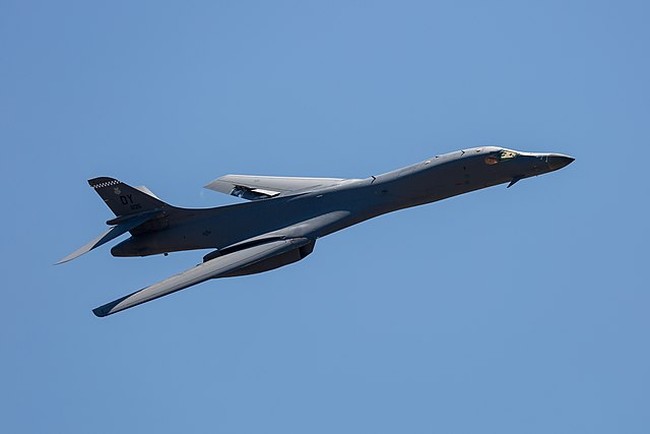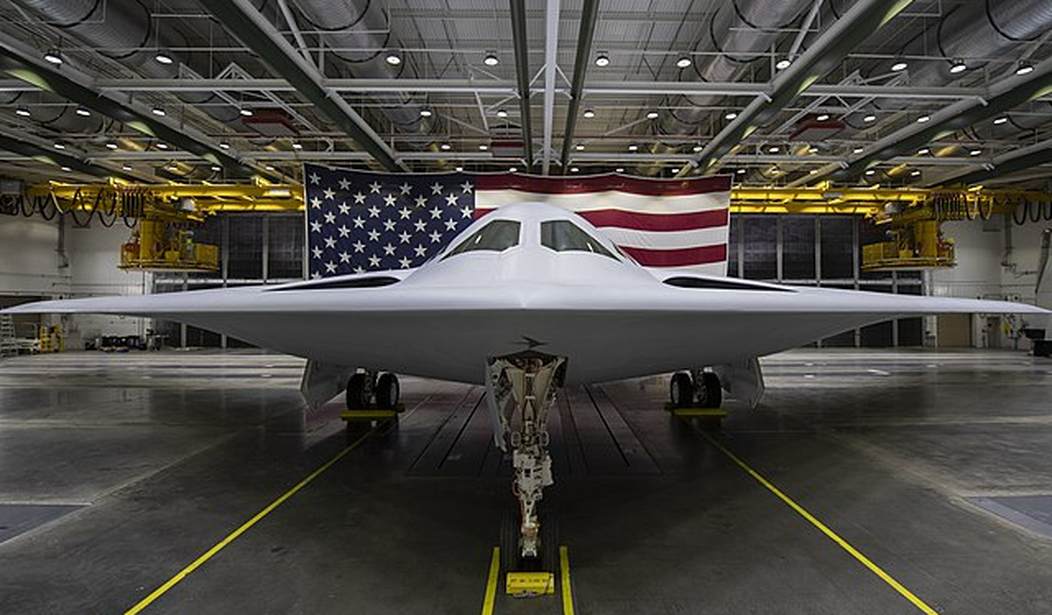The United States Air Force is about to fly into strange and uncharted territory with a bomber fleet that is part older than I am, part bleeding edge, more capable than ever — and still too small.
This is one of those good news/bad news situations that maybe you'll find as fascinating as I do.
The good news is that the Pentagon just gave the go-ahead to Northrup Grumman to begin serial manufacture of the production version of the new B-21 Raider stealth bomber. Only six test aircraft have been produced so far, but no combat-ready versions. The Air Force must have liked what it saw during the brief testing period that began just last November.
“One of the key attributes of this program has been designing for production from the start – and at scale – to provide a credible deterrent to adversaries," defense undersecretary William LaPlante said Monday night when announcing his decision to begin low-rate initial production.
I can't even begin to tell you all the cool stuff the B-21 will do, mostly because the Air Force won't tell me. But we can make some educated guesses. We know for sure that the Raider will be able to fly manned or unmanned and that its payload will probably be a bit less than the B-2 Spirit it replaces.
I can guess that the B-21 will control "loyal wingman" drones that will serve to confuse enemy defenses and to suicide-intercept incoming missiles. It will be a real-time data-gathering and data-sharing platform (like the F-35 stealth strike fighter) that will enhance the lethality of every other soldier, sailor, airman, plane, ship, or tank within its data net. I would not be surprised to learn someday that the Raider's electronic warfare suite can brick enemy electronics with high-energy bursts.
The Air Force wants a minimum of 100 B-21s. Our defense needs probably require nearly 225, according to one sharp estimate.
However many we end up acquiring, Northrop Grumman cannot build them quickly enough, as you can see by what's left of our once-magnificent (but long-neglected) bomber fleet.
The B-1B Lancer might be the sexiest-looking heavy bomber in history. It looks much like a sleek jet fighter but can deliver a stunning 75,000 pounds of ordnance to the bad guys. But Lancers have been in service since I was in high school (Class of '87) and were never expected to serve this long — particularly with all the combat they've seen in the Middle East in the 20-plus years since 9/11. Only 45 out of 104 built are still in service and they're getting more difficult and expensive to keep flying. They'll fully leave service in 2031.

Seriously, a bomber has no right to be that sexy.
There's only one stealth bomber in the Air Force's current inventory, the B-2 Spirit. But we only made 21 of them, their aging stealth features are increasingly vulnerable to modern enemy air defenses, and so they're also due to begin retirement in just a few years.
The youngest B-52 Stratofortress in service turned eligible for early Social Security benefits this year, having been "born" in 1962. Along with the Air Force's 75 other B-52s of similar vintage, the "BUFF" is expected to continue in service until 2060. That's 36 years from now and just shy of their hundredth birthday.
Imagine owning a car from 1924 as your daily driver. Under wartime stresses the entire time.
Our 76 serving B-52H models will be modernized to the B-52J standard with new Rolls-Royce engines, modern avionics, and new countermeasures — the works, starting soon. The bad news is that the B-52 modernization can't move quickly enough to prevent scenes like these that have been going on for years:
Before a B-52 takes off, [instructor pilot Lt. Col. Michael] DeVita said, it’s common for its crew to find at least one thing is broken during the preflight check process. Usually maintainers can fix the problem on the flight line and the crew takes off with a fully operational jet. But sometimes, he added, a broken system can’t be fixed in time, and the crew must decide whether its loss would be bad enough to scrub the mission.
We're sending our men and women to war in bombers so old that it's a hit-or-miss thing whether they'll be able to take off or not — while China is engaged in a massive build-up of brand-new J-20 stealth fighters and the upcoming H-20 stealth bomber, among other modernized forces.
We're in a new Cold War, but this time our main adversary is far richer and more technologically advanced than the Soviet Union ever was.
Will our young/old, stealth/not-stealth Air Force bomber fleet be ready to generate the deterrence China requires?
Recommended: Happy Valentine's Day, You Undatable Hater MAGA Slime










